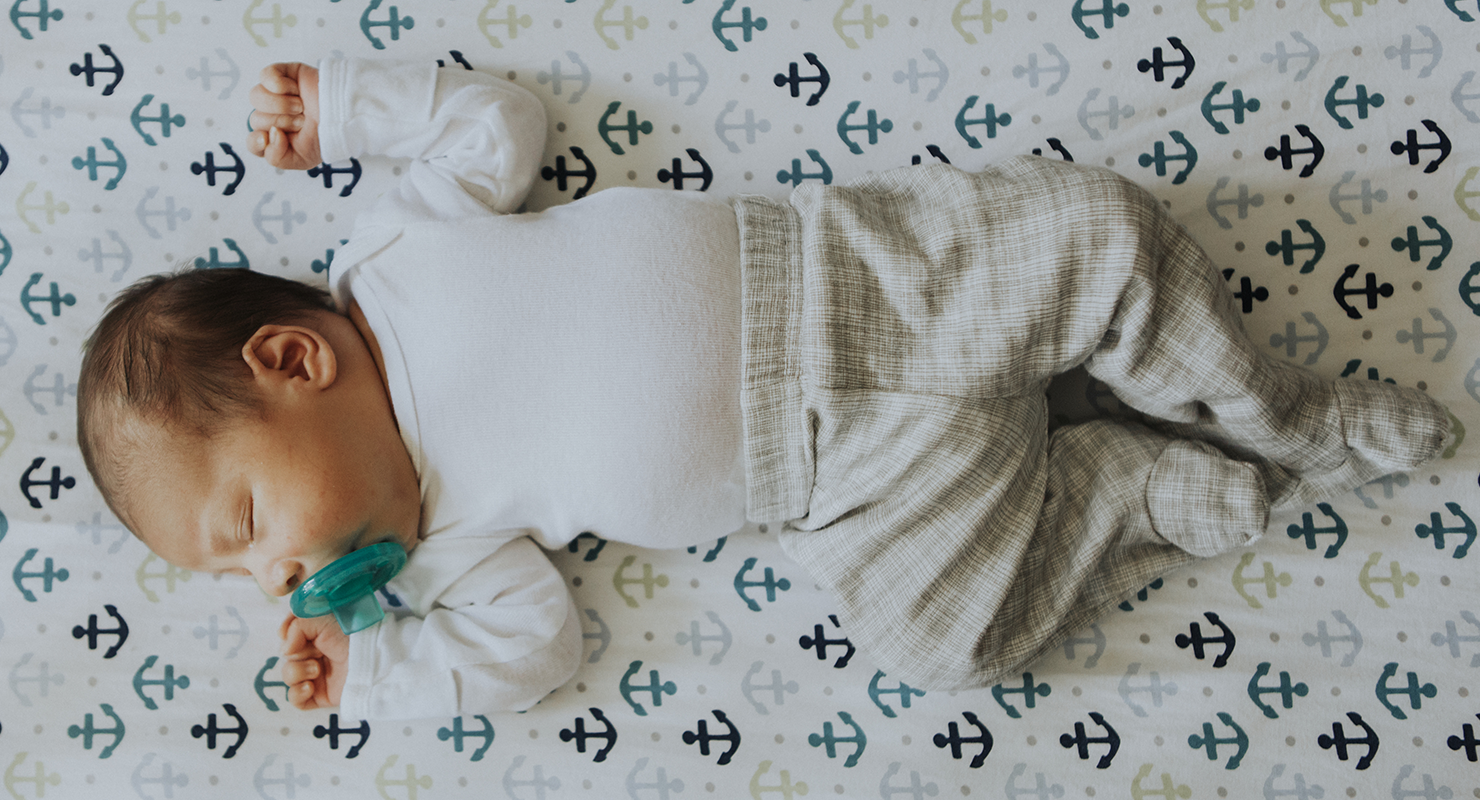5 Tips for Safe Infant Sleep
May 03, 2021

Newborns and infants sleep—a lot. But just because they’ll fall asleep almost anywhere doesn’t mean they should. Your baby’s sleep environment is vital to reducing their risk for SUID – sudden unexpected infant deaths, including suffocation and SIDS (sudden infant death syndrome). About 3,500 infants die in their sleep each year in the United States.
To help keep your infant safe as they sleep, follow this advice from Tammy Narup, RN, Certified Childbirth Educator and Coordinator of Childbirth Education Department at the Family Birthplace at Memorial Hospital Miramar.
1. Choose the Right Sleep Space
There are a lot of products in stores that are marketed for infant sleep that aren’t actually approved for sleep by the Consumer Product Safety Commission (CPSC).
I see a lot of parents that have confusion or misunderstandings in what babies should sleep in. Unfortunately, parents don’t know many products aren’t safe for sleep because the packaging uses confusing wording.
Any sleep space for a baby should be approved by the CPSC. It should be a flat, firm surface. It should be called:
- A crib
- A bassinet
- A play yard
No other products, including swings, bouncy chairs or “nappers,” are safe for infant sleep. Inclined products in particular pose a risk to babies because their chin can fall to their chest, cutting off their airflow and causing suffocation. Because babies’ brains aren’t fully developed, they might not move or wake up when oxygen is cut off like an adult does.
Download Safe to Sleep® campaign materials to learn how to keep babies safe while sleeping.
2. Always Place Babies Belly Up

Babies should also always sleep on their backs. Babies who lie on their stomachs are at an increased risk of SUID (sudden unexpected infant death). One reason may be that they fall into a deeper sleep, so are even less likely to wake up if they begin running low on oxygen. To wake up from deep sleep, babies usually need to meet their “arousal threshold.” Babies may wake up more easily from lighter sleep.
“A baby’s arousal threshold is not fully developed when they are born,” says Narup. “So under certain circumstances, they don’t know they need to pick their head up and move it, so they stay in that position until they get less and less oxygen, rebreathing their own air.”
Once a baby can roll back and forth from their stomach to their back by themselves, you don’t need to roll them back over if they are sleeping. But you should still always place them on their back first, even if they become a stomach sleeper.
3. Give Baby Their Own Space

Your infant should always be in their own sleep space, not in an adult bed, on a sofa or in a recliner. Most babies who experience SUID are found in an adult bed, with or without an adult. Adult beds pose many hazards, including pillows, blankets, soft sheets and mattress toppers. If these items cover a baby’s face, they can suffocate.
Many parents intend to follow safe sleep guidelines, but become exhausted and turn to co-sleeping or bedsharing. Bedsharing is extremely unsafe for a baby.
Instead, Narup recommends taking shifts at night so that each parent can get uninterrupted sleep for a few hours in-between feedings. You can also get help at night from family members you trust or during the day so you can nap.
Narup and the American Academy of Pediatrics also recommend keeping your child in their own sleep space in your room. You may have them in a bassinet or a play yard by your bed, for instance, so it is easy to soothe them when they sleep or hold them for a feeding.
If you do breastfeed in your bed, ensure that you move everything, including pillows and blankets, away from you and the baby so nothing can cover their face. You could also set a timer on your phone with a gentle alarm sound to wake you up in case you fall asleep while feeding.
4. Keep the Sleep Space Simple

A bare crib may not be cute, but it is safe. That means your infant’s crib, bassinet or play yard should not contain any stuffed toys, bumpers, pillows or blankets. It should also have a snug fitted sheet that is meant for that specific sleep space.
If you are worried about your child being cold or getting their legs wedged between the crib bars, a sleep sack or wearable blanket can help.
If the baby is cold, they will let you know by pulling their arms in toward their body. You should dress an infant appropriately for their sleep environment with no greater than one more layer than you would wear to be comfortable.
For instance, if you feel comfortable in pants and a t-shirt, your child will likely be comfortable in a onesie and sleep sack or onesie and footed pajamas. Any more layers may cause overheating, which is also a risk factor for SUID. Your child may be too warm if they are sweating or if their chest feels hot.
5. Take a Sleep Safety Class

Narup teaches a free, online infant sleep safety class every other week, covering everything you need to know to help reduce your infant’s risk for SUID.
Register online for the Infant Sleep Safety course.

All three Memorial Family Birthplace hospitals have been awarded the Cribs for Kids National Safe Sleep Hospital Certification highest designation, Gold Safe Sleep Champion, for our commitment to best practices and education on infant safe sleep. To learn what a safe sleep environment looks like for your newborn baby, please download the Safe to Sleep brochure. You can also refer to the Safe Sleep Recommendations from the American Academy of Pediatrics.
